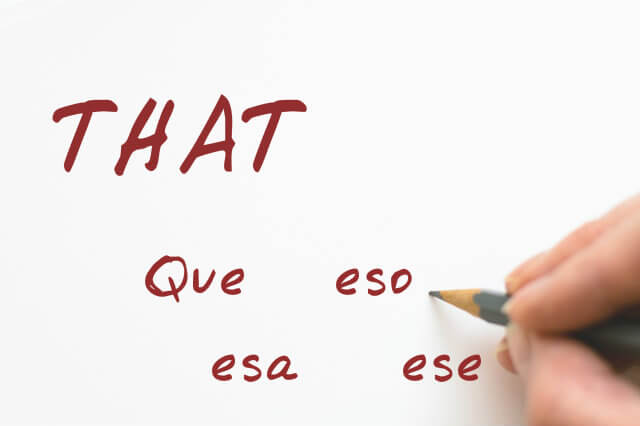How to translate THAT in Spanish

¡Hola hola!
So this is a doubt that has arisen in a lesson recently and I thought it might be a common one for more students out there!
QUE (with no accent mark)
Type of word: Connective
After there is: A verb or “sí” or “no”
Function: It links two phrases (introduces a "comment" or specification) or "yes/no" in an opinion.
Clue: Sometimes you can take it out in English, completely avoid it
Examples /common structures:
Linking sentences (opinion verb + opinion)
¿Piensas que es buena idea? – Do you think it’s a Good idea?
Creo que / es bueno que / Lo mejor es que… – I believe that/ is good that/ the best thing is that…
Es malo que te metas en la piscina tan pronto - I'ts bad that you get into the pool so soon.
Structures /phrases
Tengo que – I have to … (do something).
Tienen que ducharse rápido - They have to shower fast.
Answering
Pienso que sí/no. – I think so/ I don’t thing so.
Creo que sí/no - I believe so / I don't believe so.
Including a comment / specification - in this case it can be translated as "who" or "which" in English.
Fui con mi padre, que tiene miedo a volar - I went with my dad, that/who is scared to fly.
Compré rosas, que son mi flor favorita - I bought flowers, that/which are my favourite flower.
And in this sentence we have two of these "que":
- He ido a la playa de Aurime, que es la playa que recomendó mi madre - I've gone to Aurime beach, that/which is the beach that my mom recommended.
ESO, ESE, ESA
Type of word: Determiners
After it: a noun (a thing/person/concept)
Function: To introduce a noun and say how far away it is from the person talking
We got the masculine singular (ese), the feminine sigular (esa) and the neutral (eso).
If you want to know more about how to use these three and the plural version ("those") on it check out this post and maybe do the practice included before as well.
Examples
Ese perro juega en el jardín – that dog plays in the garden.
¿Qué jersey quieres? – What jumper do you want?
Me gusta ese – I like that one.
Eso es horrible – that’s horrible.
Esa mujer es mi tía – that woman is my aunt.
Practice
Fill in the gaps with “que”, “ese”, “eso” or “esa”.
No tenemos ____ casa ahora mismo pero podemos enseñar otra.
Pienso ____ deberías visitar a tu madre más a menudo.
Sabemos ____ este gato es joven, pero ___ otro es mayor.
¿Dónde está _____ falda que me gusta?
Voy a recoger la cocina, ____ está muy desordenada.
Tenéis ___ limpiar la habitación antes de mañana.
Lo mejor de la situación es _____ tenemos tiempo para preparar.
Lo malo de estas vacaciones es ___ son muy intensas.
Las botellas de plástico ____ usamos van al mar y no desaparecen.
Tengo que despertar a Pablo, ___ lleva una hora durmiendo.
Dicen que no tienen tiempo. No entiendo ______.
Sol: esa/que/que/ese/esa/que/que/que/que/que/que/eso
Did you also find this a problem? Did this post help? Let me know in the comments below!
¡Hasta pronto! :)